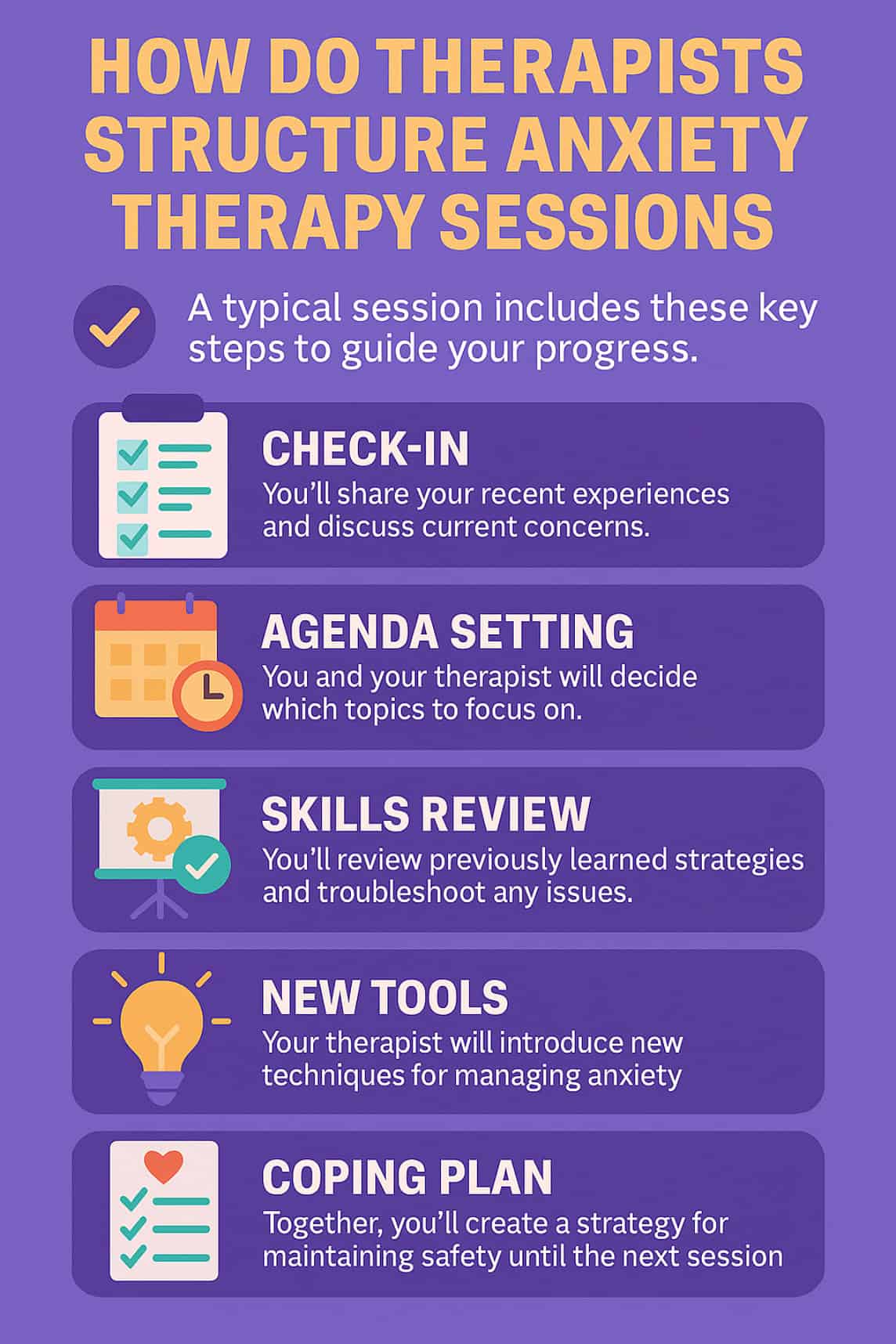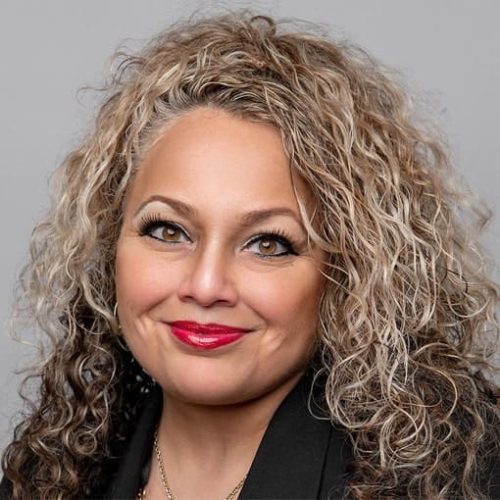
Key Takeaways for Anxiety Therapy Sessions.
- Check-in: Start by sharing how your week went, including any anxiety spikes or wins.
- Agenda Setting: You and your therapist decide what to focus on during the session.
- Skills Review: Go over coping strategies you tried since the last visit.
- New Tools or Techniques: Learn and practise a new anxiety-reduction method.
- Addressing Triggers: If something urgent comes up, the plan adjusts to support you.
- Coping Plan & Wrap-up: End with a practical plan to help you manage until the next session.
🎯 This flow helps build emotional safety, track your progress, and boost your confidence, especially if you are also managing recovery from substance use.
👉 Ready to take the next step? Learn more about anxiety therapy at AERCS and how to book your free 15-minute phone consultation.

Therapists typically structure anxiety therapy sessions in five clear steps, a quick check-in, agenda setting, a brief skills review, learning new material, and finishing with homework plus a coping plan, so you always know what will happen from the moment you sit down until you walk out feeling supported and prepared.
Check-In: Taking Your Emotional Temperature.
At the start of each session, your therapist will ask how you are feeling today.
- Purpose: Spot any spikes in anxiety or cravings right away.
- Typical questions: “Rate your anxiety from 0 to 10,” or “Did anything stressful happen since we last met?”
- Flexibility: If you had a sudden panic attack or an urge to self-medicate, the therapist can adjust the agenda on the spot.
Agenda Setting: Mapping the Next 50 Minutes.
Why It Matters.
Setting an agenda keeps the session focused and prevents conversations from drifting. Together, you and your therapist choose one or two priorities, such as practising a breathing technique or analysing a thought record.
Quick Tips for You.
- Jot down pressing issues beforehand.
- Bring any questions about last week’s homework.
- Speak up if something urgent pops up, like a new work stressor.
Skills Review: What Worked, What Did Not.
Before diving into new material, you will review last week’s homework.
- Celebrate wins: Maybe you used grounding to get through a noisy subway ride.
- Problem-solve misses: If a thought-challenging worksheet felt confusing, your therapist will clarify it.
- Data for progress: Regular review helps track how your anxiety scores change over time.
New Material: Adding Tools to Your Toolkit.
Depending on your treatment plan, this section may include:
| Technique | Example Activity | Why It Helps |
|---|---|---|
| Cognitive Restructuring | Identify a catastrophic thought and replace it with a balanced one | Lowers anxious predictions |
| Exposure Planning | Rank feared situations, choose a mild exposure task | Reduces avoidance |
| Mindfulness Practice | Two-minute body scan | Eases physical tension |
Therapists introduce one main concept per session so you are never overloaded.
Homework and Coping Plan: Keeping Momentum Between Visits.
Homework.
You leave with a specific assignment, such as tracking worry themes or practising progressive muscle relaxation. Expect homework to take 10 to 15 minutes a day.
Coping Plan.
- Emergency steps: Who to call, what skill to use if panic strikes.
- Addiction triggers: Strategies to avoid substituting substances for therapeutic skills.
- Safety net: A reminder that you can email or call if a crisis surfaces.
This wrap-up ensures you feel safe and committed until the next appointment.
Putting It All Together: A Sample 50-Minute Timeline.
- Check-In (5 min)
- Agenda Setting (5 min)
- Skills Review (10 min)
- New Material (20 min)
- Homework & Coping Plan (10 min)
Knowing this flow can lower pre-session nerves and help you arrive ready to work.
How This Structure Supports Your Recovery.
- Predictability reduces session anxiety, letting you focus on learning.
- Regular skills reviews reinforce practice, which makes anxiety fall faster.
- Built-in coping plans cut relapse risk because you leave each appointment with a clear strategy.
Anxiety Therapy Sessions.
Structured anxiety therapy sessions guide you through check-in, agenda, skills review, new learning, and homework with a coping plan. This predictable flow builds confidence, targets anxious thoughts, and keeps you safe between visits.
Ready to experience a well-structured therapy session? Visit our Anxiety Therapy page and book your free 15-minute phone consultation. Let’s create a plan that works for you.
What happens first in anxiety therapy sessions?
Sessions start with a brief check-in to gauge current anxiety and recent events.
How long do anxiety therapy sessions usually last?
Standard anxiety therapy sessions run about 50 minutes, covering check-in through homework.
Do anxiety therapy sessions always include homework?
Yes, therapists assign homework in anxiety therapy sessions to reinforce skills between visits.
Can anxiety therapy sessions address sudden addiction triggers?
Absolutely, therapists can adjust the agenda within anxiety therapy sessions to tackle new cravings or stressors.
Why end anxiety therapy sessions with a coping plan?
A coping plan ensures you leave anxiety therapy sessions with clear steps to stay safe and calm until the next meeting.
Do You Need Anxiety Therapy?
Take this quick self-assessment to see if anxiety therapy could help you manage symptoms.Note: This questionnaire is educational only and does not replace a clinical assessment. If you wish to obtain professional guidance, please follow up with a licensed mental health professional.

